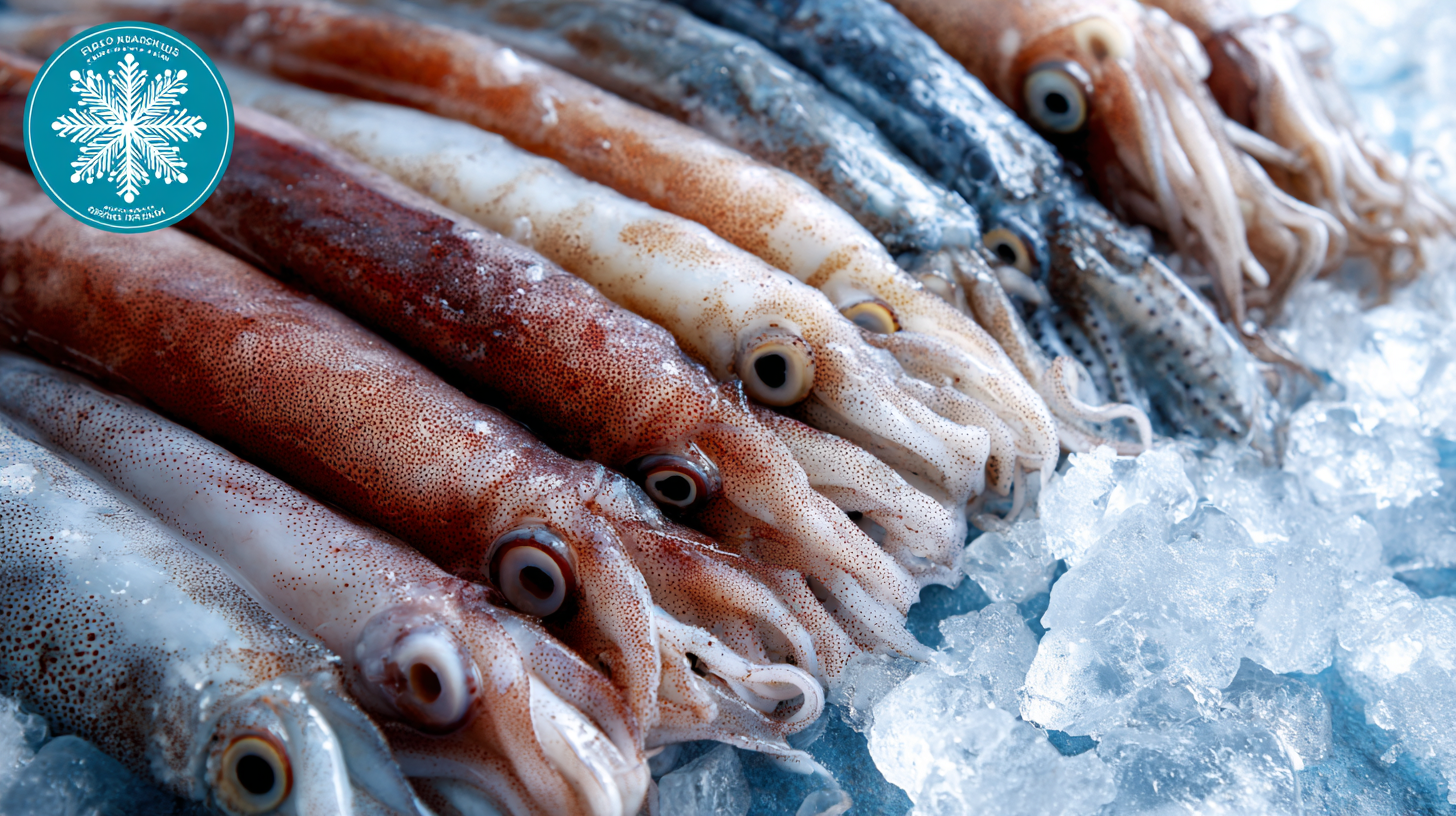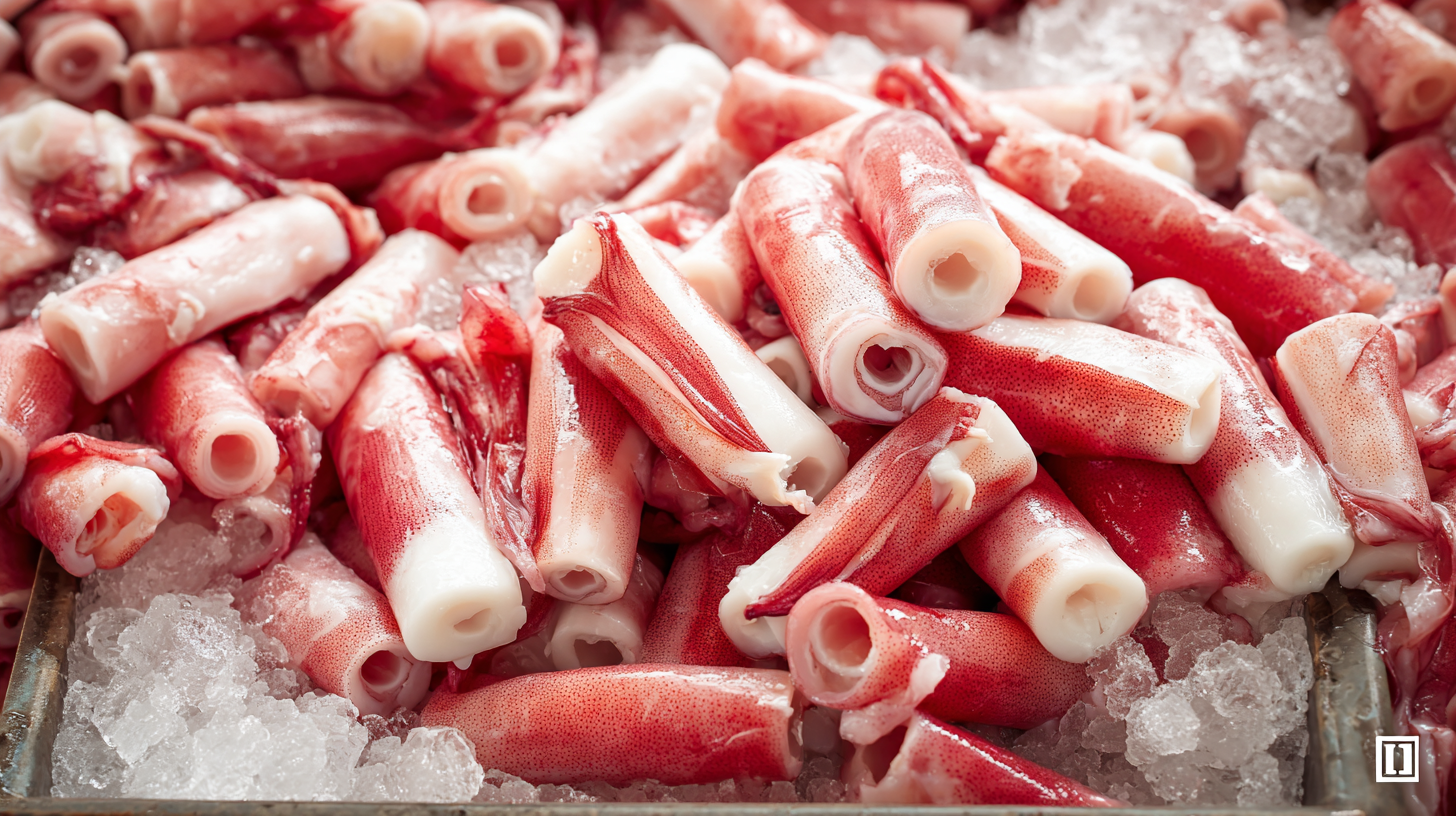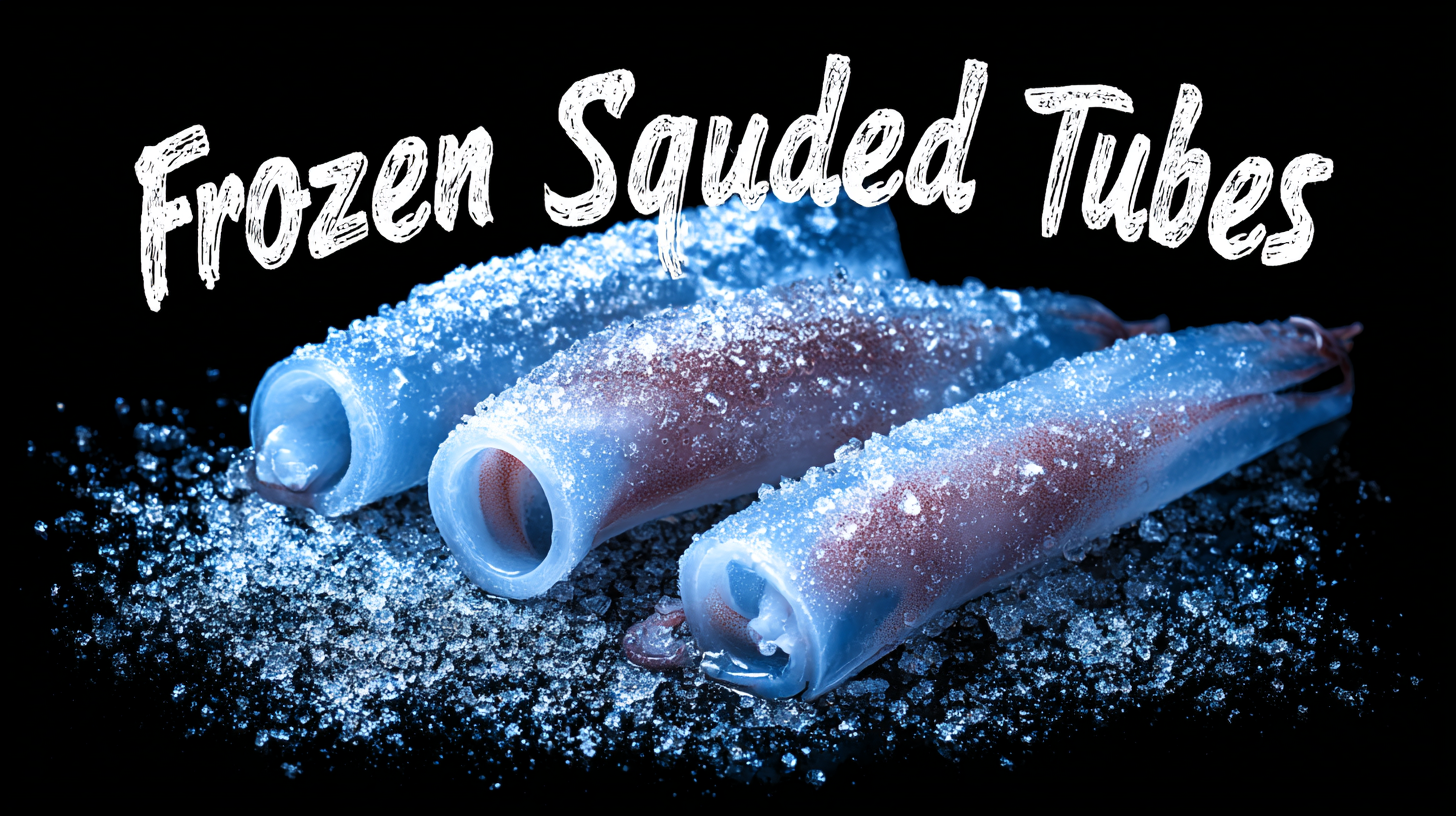As the global demand for seafood continues to rise, the market for Frozen Squid Tubes is projected to see significant growth by 2025, driven by the increasing popularity of ready-to-eat meals and the rich nutritional benefits of squid. According to a recent market analysis report by Research and Markets, the frozen seafood market, specifically frozen squid products, is expected to expand at a compound annual growth rate (CAGR) of 4.1% during the forecast period. This surge in demand creates vital opportunities for businesses, making it imperative to select the best Frozen Squid Tubes to meet the evolving needs of consumers and ensure quality and freshness. In this blog, we will explore key factors to consider when sourcing these products, helping businesses navigate the complexities of this lucrative market.

When it comes to selecting the best frozen squid tubes for your business, understanding the different types available in the market is crucial. Frozen squid tubes can vary significantly in terms of size, species, and processing methods. For instance, common species include Atlantic squid and Mediterranean squid, each offering unique flavors and textures that can enhance various dishes. Additionally, the size of squid tubes ranges from small to extra-large, affecting not only the presentation but also the cooking time and method.

Another factor to consider is the processing method. Some squid tubes are cleaned and frozen right after catch, preserving their freshness and quality. Others may undergo blanching or other treatments that can alter their texture and taste. Knowing these details will help you choose squid tubes that align with your culinary needs. Always look for suppliers who provide detailed information about their products, allowing you to make an informed decision that will satisfy both your business requirements and your customers’ tastes.
When selecting frozen squid tubes for your business, it's essential to consider several key quality indicators that can impact both the taste and profitability of your offerings. Firstly, look for the color and appearance of the squid. High-quality squid tubes should have a bright, translucent appearance without any discoloration or dark spots. This is an indication of freshness and proper handling. Additionally, consider the size and uniformity of the tubes, as consistent sizing aids in cooking and presentation, contributing to an enticing dish.

Another critical aspect to evaluate is the texture of the squid. Quality squid should feel firm to the touch, indicating that it was frozen at its peak freshness. A soft or mushy texture may suggest that the product has undergone multiple freeze-thaw cycles, which can ultimately affect its taste and quality. Additionally, examining the packaging for any signs of freezer burn or excessive ice crystals is essential, as these can indicate subpar storage conditions. By focusing on these quality indicators, you can ensure that the frozen squid tubes you choose will meet the expectations of your culinary creations and satisfy your customers.
When sourcing frozen squid tubes for your business, evaluating suppliers is a crucial step that can significantly impact the quality of your product. Start by assessing the supplier's reputation in the market. Look for reviews and testimonials from other businesses who have purchased from them. A reputable supplier should have a proven track record of delivering high-quality products consistently. Additionally, consider any certifications they possess, such as HACCP or ISO standards, which indicate adherence to safety and quality guidelines.
Next, focus on the supplier's sourcing practices. Understanding where and how they obtain their squid is essential, as this affects both the quality and sustainability of the product. Suppliers who prioritize ethical fishing practices and have strong relationships with their fishing communities will likely provide fresher and more reliable products. Don't hesitate to ask for transparency regarding their supply chain and processing methods. Finally, consider the supplier’s logistics capabilities. Ensure they can maintain the cold chain efficiently to preserve the freshness of the frozen squid tubes during transportation, which is vital for maintaining product quality upon delivery.
This chart compares the quality ratings of different suppliers of frozen squid tubes based on a rating scale of 1 to 10. It provides insight into which supplier may best meet your business needs.
When selecting frozen squid tubes for your business, striking the right balance between price and quality is crucial. Recent industry reports indicate that while premium quality squid can command a higher price, the long-term benefits often outweigh initial costs. According to the Seafood Price Index, high-quality frozen squid tubes experience a price variance of approximately 20-30% compared to lower-grade products, primarily due to factors such as freshness, sourcing methods, and processing standards.
Businesses should consider customer preferences and market trends when determining their product offerings. A study by the National Fisheries Institute shows that over 60% of consumers prioritize quality over price when purchasing seafood, highlighting the importance of investing in superior products. Moreover, achieving a good balance can lead to increased customer satisfaction, repeat purchases, and ultimately, a stronger reputation in the marketplace.
By focusing on both quality control and cost management, businesses can ensure that they are not just meeting their immediate needs but also contributing to sustainable practices that enhance their brand integrity.
When it comes to maintaining the quality of frozen squid tubes, proper storage and handling practices are crucial. To begin with, frozen squid should always be stored at a constant temperature of -18°C (0°F) or below. This temperature not only preserves the texture and flavor of the squid but also prevents the growth of harmful bacteria. Ensure that your freezer is well-equipped and routinely checked to avoid temperature fluctuations, which can lead to freezer burn and spoilage.
Once you receive frozen squid tubes, it’s essential to handle them with care. When thawing, avoid using hot water or leaving them at room temperature, as this can compromise their quality. Instead, defrost them in the refrigerator overnight or submerge them in cold water for a quick thaw. After they are thawed, use them promptly and never refreeze once defrosted, as this can negatively impact their texture and taste. By following these best practices for storing and handling frozen squid tubes, businesses can ensure maximum freshness and deliver high-quality products to their customers.
| Criterion | Recommendation | Notes |
|---|---|---|
| Size of Squid Tubes | Select medium to large sizes (10-15 cm) | Larger tubes are usually more tender and desirable for culinary use. |
| Color and Appearance | Look for bright white or slightly pinkish hue | Avoid tubes with discoloration or ice crystals. |
| Source and Quality | Choose reputable suppliers who adhere to quality standards | Check for certifications and freshness guarantees. |
| Storage Temperature | Maintain at -18°C (0°F) or lower | Regularly check temperature over time to ensure quality. |
| Packaging | Vacuum-sealed packaging is preferred | Prevents freezer burn and preserves flavor. |
